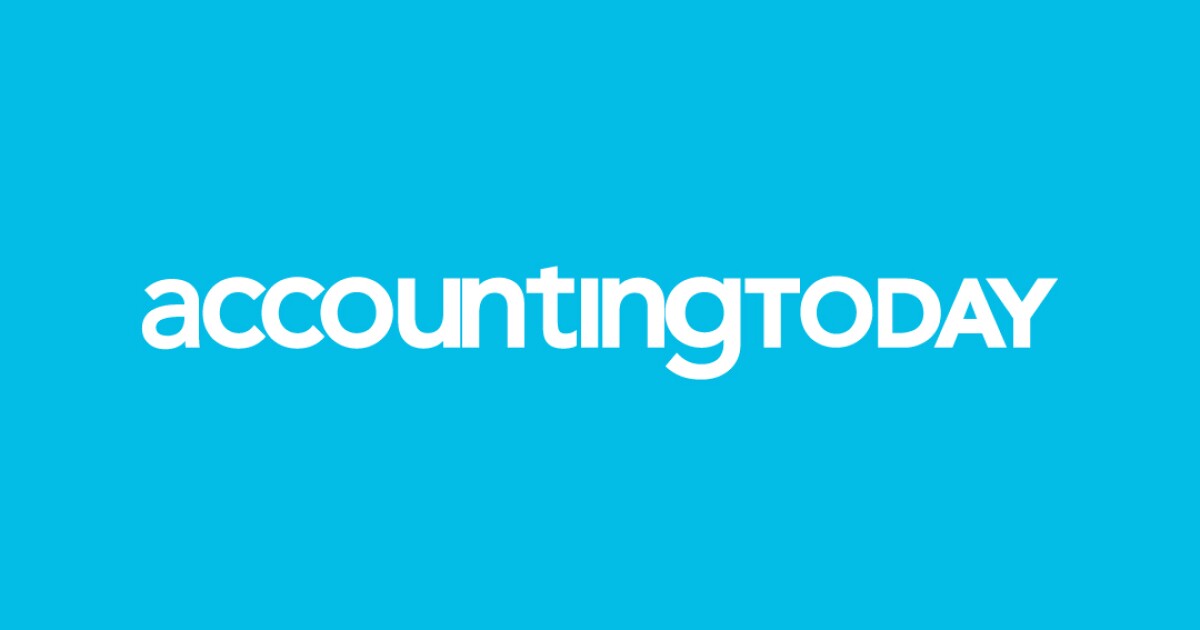Donald Knight’s LinkedIn profile holds a number of titles that tell the story of his career: Chief people officer. Senior vice president. Partner. Co-founder. Senior director. Most important, however, is the descriptor at the top: “Daylen’s dad.”
Knight is the parent of a 7th-grader—and he wants everyone to know it. His son’s name is even part of his Instagram and Slack handles; he says most of his colleagues at tech company Greenhouse Software, which he joined last year as chief people officer, know all about Daylen, even if they haven’t yet met him.
It’s not just proud dad energy that’s driving Knight to tell his professional circles all about his son—he wants to intentionally do his part to lessen the stigma of working parents putting their kids before their jobs.
At first, he was hesitant to do that. He didn’t take any leave when his son was born 13 years ago—and later realized the message that move may have sent to his team: that business comes before family. As he moved throughout his career and his parenting journey, Knight committed to sending a different message: encouraging team members to skip a meeting to attend a child’s ballet recital or baseball game, to talk about their families and their struggles.
He quickly found, however, that many employees—particularly women—were afraid of identifying too strongly as a parent, thinking it would affect their chances for advancement.
“I vowed, ‘Heck no. If there’s something I can do as a dad to make it more normal, more status quo—parents being parents—then I’m going to do so,” Knight says.
Being transparent about his own life as a parent hasn’t just impacted his own teams, Knight says, but also other leaders. One vice president at the company—who’s currently out on parental leave—told Knight he decided to add his kids’ names to the top of his LinkedIn profile after seeing Knight do so.
“It’s creating a sense of normalcy where you can be parents first and know your advancement won’t be stifled,” he says. “I want to be known for being Daylen’s dad. I don’t care about CPO or CHRO; I’d rather be known as his dad more because I know I’m changing the conversation, changing the dynamic.”
Knight recently shared how this empathetic mindset meshes with the culture at Greenhouse and how that culture is driving the organization toward DEI advances, which he will further dive into at the HR Technology Conference this fall.
Knight: There was a report that came out in 2018 from the World Economic Forum about the pay disparities between men and women, and it said that it was going to take 200-plus years [to reach pay equity]. Personally, that made me pause; I have a younger sister and to think it would take 200 years for her to get equal pay is just ridiculous to me. At Greenhouse, I’m happy to say I work for a company that understands that value as well.
Fifty-four percent of our workforce is women; unlike most companies, we have more women in our organization than men. We believe in equal pay and pay transparency. We publish all salary ranges, we do a pay equity analysis literally every year to make sure—across different demographics, including gender—people are being paid fairly, commensurate with their experience, but also to their peers in the space. Moving forward, as we continue to be a distributed company across multiple states and countries, we’re going to be looking for ways to build a compensation structure within our philosophy that allows folks to move around and still see commensurate pay follow them.
HRE: What is your advice for HR leaders within the tech industry on making these advancements toward equity?
Knight: You’ve got to be very intentional. We have an IDEA team—inclusion, diversity, equality, allyship—and it’s impactful not only because they’re making sure we do the analysis of what is working for us as an organization, but they’re also making sure our people are having the type of experience that is commensurate with other demographics.
What do I mean by that? Each quarter, we have a Your Voice survey. We ask our “Greenies” questions in five areas: leadership, enablement, growth and development, engagement and inclusion. If we start to see, for instance, that Jen is having a different reality than Donald, or other people in the organization, our IDEA team does the follow-up to figure out what’s leading to that difference.
Over the years, because of that feedback, we’ve been able to improve how we discuss compensation, in a more transparent way, and ensure people are treated fairly as new hires coming in, or as they’re being promoted.
HRE: Beyond equity issues, what have been some of your other most pressing priorities at Greenhouse in the year since you joined the organization?
Knight: I’ll limit it to three … First is growth and development—making sure we’re pouring meaningful time and dollars into growing the people at our organization. We started a program for middle managers—that’s where we see the highest turnover, across multiple industries. Our program is called Bloom and it’s a three-month program geared to equipping leaders with the skill sets they need around leadership, business acumen and delegation.
Also, as a distributed company, we’ve closed many offices and we’ve had to create more flexibility in the workplace. We have a Global Passport Program, where you can work in an approved country for 60 days without burning any PTO. You can see relatives, move to a place where you can culturally immerse yourself; say you’re learning Spanish on Duolingo and you want to actually practice in a Spanish-speaking country. This allows that flexibility, and I’m really excited about it.
Click here to read more Insights from a CHRO.
Last but not least, we recognize the hardships of the economy. We’ve seen hiring slow down in 2023 as compared to 2022. So, we’re providing thought leadership to other organizations on how to make sure they don’t go lay off DEI teams or they’re still continuing the behaviors needed to foster a place of inclusion. We’re trying to make sure to share some of our best practices and also learn about how other organizations have done better. That open transparency we have with our customers helps us and others make better, sounder decisions.
HRE: How does the culture at Greenhouse show up in your day-to-day work?
Knight: Our founders have done a good job of creating an environment where people can be people. We don’t treat people—for lack of a better word—as resources. I felt that when I got here, and I still feel that. Certainly, a level of empathy and genuineness in the workplace is important, particularly as we’re starting to see things outside affect the way people show up at work—world catastrophes like what’s happening in Maui; we have folks from Hawaii and this affects them. There’s a human element that personifies our culture, a greater sense of belonging.
We’re also very purposeful. There is a social impact aspect to what we’re providing to companies to help facilitate hiring in a way that limits bias and subjectivity in the hiring process. We recognize that as our responsibility.
And we’re very entrepreneurial. The environment here is one where we could care less where great ideas come from—as long as we’re fostering an environment where great ideas can be surfaced. I’ve been in environments that have been rather suffocating—where you’re not allowed to speak up, where your voice is not allowed to be heard unless you have certain letters or titles in front of your name, or you have a level of tenure. At Greenhouse, we foster an environment where you can speak up and have your voice heard about things that we can do differently. That’s entrepreneurial and is a way for all people to feel recognized—whether you’re an individual contributor, a manager or an executive. It’s an environment we cultivate on a daily basis.
HRE: How can HR leaders leverage company culture to navigate the ongoing changes affecting the world of work—from economic uncertainty to shifts in the job market?
Knight: We’re calling on HR teams and people teams to do things we traditionally have not had to navigate. The modern HR leader is literally doing everything from [figuring out] quarantining to contact tracing to social responses to legislation impacting certain demographics. And there are a couple of things we have to think about from a change management framework.
The No. 1 thing is situational analysis—we have to be plugged into everything that’s happening today, and not just from a business lens. There are things that are affecting our personal lives and how we show up professionally. The next is around defining a problem that our employees are seeing and any unintended consequences because of that problem. And it’s about setting goals for ourselves and saying, “OK, we’re monitoring the pulse, we know that’s happening, we know the problem—and now, what are our goals as an organization? What do we want to happen, and what are the strategies we’re going to put in place to make sure our goals are achieved?”
I’ll give you an example. Last year, we saw some meaningful lawmaking decisions come out as related to reproductive rights and access. We had to do a situational analysis: The laws changed, regardless of how anyone felt about them. So, OK—how does that affect our employees today? What access do they have today that they won’t have tomorrow? And our goal was to ensure our employees had whatever they needed to be successful, so we expanded our fertility benefits in a way that people could get access to whatever they were looking for. It’s not picking sides on any issue but rather being attuned to what’s happening, knowing the problem and creating strategies to have a meaningful impact for employees.
We have a responsibility to create an environment for employees to thrive. If we keep that main thing as the main thing, we can continue to stay mindful of all of that’s facing the business but also the things that are affecting employees on a personal level.
HRE: Looking at your own HR career, what about being in this field has surprised you the most?
Knight: First is the impact of the decisions that come from the people organization—how that literally can influence the way people show up every day. I think I grasped that before—but now more than ever, there are a lot of decisions we’re making that can make or break the way people view an organization. It’s beyond just compensation. If you’re prioritizing diversity, are you celebrating each of the cultural heritage months? Are you fostering an environment where people are seen and valued and heard? When social events are occurring, how do you help people feel their community is not overlooked? The impact of all of those things is a lot more magnified and meaningful than it might have been in years past. I feel the weight of that responsibility, and my leadership team feels the weight of how our decisions could be the difference between someone feeling very joyful or very unsettled.
Second, I didn’t realize the level of criticism that our teams—HR as a profession—would receive. Everybody feels like they understand people even if they didn’t go to school for it. And because of where the function has been elevated and where we’re able to make an impact, it’s created an environment where people are hyper-critical of the HR function.
That’s why it’s more important than ever to foster community among ourselves, to provide a level of thought exchange where people can learn what’s going well and apply it in their own organizations. More importantly, we need a sense of encouragement.
We’re the last ones to prioritize ourselves—we were taught, we were trained, we got As in class when we prioritized the business—and in many ways, we’ve forgotten that people are what drive the business, and we’re the engine that drives the people. More than ever, we need to be thinking about our wellbeing, making sure we’re encouraging each other, that we’re creating groups and communities where we can learn, encourage and demonstrate empathy.
To learn more from Knight, join him at the HR Technology Conference this fall in Las Vegas. He will speak Oct. 12 in a session titled Navigating the Future: Embracing Pay Transparency as Modern HR Leaders. Click here for more information and to register.
Credit: Source link










